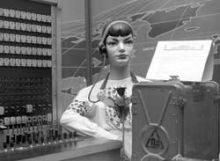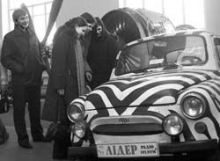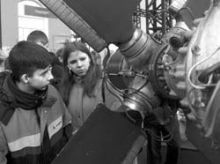Today’s children have little interest in classical art and ancient history. If you don’t know how to occupy your child, who is solely interested in computer games and technical innovations, then it’s high time you took him to the State Polytechnic Museum.
There you will find interesting items on display for boys, who are obsessed with technology, girls, who can’t figure out how all these devices operate, and parents, who have no idea that all these technological novelties are ancient contraptions long since forgotten. Over the past 105 years students and faculty members have put together a collection of fascinating mechanisms and exceptionally rare and unique technologies. The Polytechnic Museum has more than enough to look at, touch, unscrew, and reassemble.
Here school children receive simple explanations of the principles governing the operation of all kinds of devices. The museum guides make the laws of mechanics and chemical formulas, which are incomprehensible during boring classes, simple and understandable, and they will demonstrate them for visitors. The guided tours are designed for various age groups. The corkscrew rule or Newton’s laws are not explained to students, whereas children in the lower grades can see a demonstration of the principles of hydraulics, mechanics, and electronics.
Most of the items on display are interesting to children and adults alike. Near the entrance to the first exhibition hall stand “prehistoric” electronic machines, among them a bulky forbear of modern computers and notebooks. Young people who weren’t fortunate enough to operate such electronic dinosaurs cannot even imagine that a PC once occupied a huge room.
Displayed next to them are the first synthesizer models, the size of grand pianos. Next to them are old television sets resembling bedside tables or chests of drawers with tiny screens and magnifying glasses. It is interesting to examine a wooden water conduit and bricks (each autographed by the manufacturer) dating to the 17th century.
Another hall is a mecca for intelligence officers and spies. On display here are teletypes, coding machines, of which the most popular one conveyed data using the Morse code.
The largest hall, the size of a soccer field, contains a model of a small plane, yacht decks, and a tuned-up Zaporozhets painted like a zebra. Here visitors can see the first black boxes that were launched into outer space, a life-size model of the first sputnik, and samples of the superlight material that covered the hull of spacecraft. Very few pieces are left, because visitors take them as souvenirs, say the guides.
Many visitors are amazed to see huge cameras as tall as a man. These are used for creating super-precise electronic circuits. The museum shows how the legendary Svema film and powdered milk were made. Boys of all ages are especially thrilled by a battery-driven vehicle resembling a spaceship of the future, which was developed in the USSR in 1976.
These and many other fascinating technical, mechanical, and electronic devices on display are awaiting pint-sized Einsteins and their parents at the State Polytechnic Museum.










